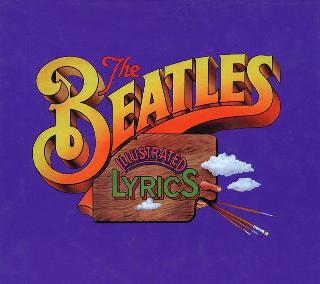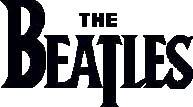Index
Home
Vorige
I'm Happy Just to Dance With You
Composer(s) : Lennon and McCartney
Year : 1964
Chords/Tabs: I'm Happy Just to Dance With You
Notes on "I'm Happy Just To Dance With You" (IHJTDWY)
KEY c# minor/E Major
METER 4/4
FORM Intro + Refrain (2nd half) -> Verse -> Verse -> Refrain ->
Verse -> Refrain -> Verse -> Outro (w/complete ending)
GENERAL POINTS OF INTEREST
Style and Form
- A brisk tempo combines here with relatively small section lengths
to make this a short song with a paradoxically longish form; the
refrain is not only repeated twice, but the latter half of it appears
as part of the intro as well.
Melody and Harmony
- The melody of the refrain is quite pentatonic and has a shape in which
downward gestures predominate. In contrast, the verse melody is not at
all restricted pitch content-wise, and its shape is more closely resembles
an arch.
- This is yet another L&M song in which a Major key (E) and its
relative minor (c#) continually alternate as the apparent choice of
home key. The verse here is always clearly in the Major mode, yet the
intro and the refrains always start off in the minor mode. In the
outro, this duality develops into a brief moment of tense conflict
before it is ultimately resolved in favor of the Major mode.
- Major/minor gambits must have fascinated John and Paul during this
era judging from the number of roughly contemporaneous songs which
use the device. The Major/relative-minor trick appears for example
in "Not A Second Time" and "And
I Love Her". And a similar trick of alternating a Major key with
its parallel minor (e.g., A Major/minor) appears in
"Things We Said Today" and
"I'll Be Back".
- Harmonic gambits are not the only devices to resonate from one song
to another on the AHDN album. As I should have pointed out in our
last note on "If I Fell", the unusual technique
seen there of having three chords in a row moving downward in
half-step root motion also appears (admittedly in a different context)
in "Things We Said Today".
- All this aside, the chord selection itself in this song is quite
straightforward though the use of an augmented alteration of V in place
of the more normal Major chord is noteworthy.
Arrangement
- Although George's understatedly sardonic performance as a quipster
shines throughout A Hard Day's Night, his double-tracked lead vocal
here was to be, fairly or not, his lone moment in the musical spotlight.
- A seemingly trvial and reverberated "oh-ooh" backing part for John and
Paul in the refrains actually turns out to critically underscore the
rhythmic hook of the song. Note how from the very second measure, the
move from the f# chord to the one on G# which recurs over and over again
throughout, is always delivered along with a heavy syncopation on the half
beat betwwen '2' and '3'; i.e. "on 2-AND". During the intro and first
refrain Ringo nicely punctuates this moment with one of his characteristic
fills. Unfortunately, he falls asleep at the switch for this during the
second refrain and most of the outro. And no, imho this is not an
example of what I typically describe as an avoidance of foolish consistency.
- Speaking of consistency, note how the deployment of the backing
voices is carefully staged. In the first refrain they appear
only after the second phrase ("is everything I need"), whereas in the
second refrain it appears after the first phrase as well ("Just to
dance with you ...").
- The instrumental backing track is on the fuzzy side though John's
bouncy rhythm guitar work does and Paul's bassline both stand out
clearly.
SECTION-BY-SECTION WALKTHROUGH
Intro + Refrain (2nd half)
- This section is eight measures long and is built out of four
two-measure phrases, the first of three of which are based on the same
chord progression:
-------------- 3X -------------
|c# |f# G# ||A B |E B |
c#: i iv V VI
E:IV V I V
- The first four measures are entirely instrumental, while the latter
four present what turns out later to be the second half of the refrain.
- Following the initial establishment of c# minor as the apparent home
key and repeated emphasis of this fact, the song pivots around toward
the relative Major in the final couple measures.
Verse
- The verse is also eight measures long and built out of four two-measure
phrases. The first two phrases form a parallel couplet while the last
two tend of be heard as one long phrase which balances out the first two:
-------------- 2X -------------
|E g# |f# B |
E: I iii ii V
|A |E c# |A B aug. |E (B) |
IV I vi IV V I (V)
- In spite of the formal similarity between this and the other sections,
contrast with the intro and refrains is provided here by the key being
clearly E Major throughout, and the fact that even though the tune itself
contains some syncopation, that hook rhythm on the chord changes is
pretty much avoided here entirely.
- A vi chord (c#) would have been a more likely choice to put in between
I and ii at the beginning of this section than the iii chord (g# minor).
As it stands, the chord-stream parallel motion inherent in the iii->ii
progression adds a jazzy touch that would have been missing had vi been
used instead.
Refrain
- The schematic plan of the refrain is identical to what we saw in the
intro. The only difference is that the first half of the section now
contains an opening vocal phrase to balance out what had been heard
earlier as just the second half.
Outro
- The outro is a seven measure section that is elided with the last
measure of the final verse. Note the ingenuity with which this section
begins as a deceptive cadence coming off the B augmented chord in
what is the seventh measure of the verse; you're expecting to hear
E (I) at this point, not c# (vi):
|c# |f# G# |A B |
E: vi IV V
c#: i iv V VI
|c# |f# G# |A B |E ||
E: vi IV V I
c#: i iv V VI
- But most powerfully, they don't stop there. In many of their earlier
songs, the triple rote repeat (or "petit reprise" as the French call it)
of a final phrase during the outro had become a cliche, trademark, or both.
Here, in a novel variation on this gambit, they pull the deceptive cadence
trick twice in a row before playing it straight the third time around.
Somehow it conveys the image of beating something down that refuses
to give up.
SOME FINAL THOUGHTS
- It's no surprise that the emphasis on c# minor during the outro is
accompanied by a reprise of the back beat heard earlier in the intro.
The complete ending on an added-sixth chord also seems especially
appropriate. To the extent that this chord tends to sound as though
it were a superimposition of the I and vi chords together, it's only fair
that while the Major mode is allowed to ultimately previal, a touch of
the bittersweet vi is allowed to linger alongside it, or if you will,
embedded within.
- By the way, looking for "mistakes" or recording oddities ? Then
what the hell is that little squeak or scrape that managed to elude
the quick pulling down of the faders right after the final chord ?
Regards,
Alan (awp@bitstream.com OR uunet!huxley!awp)
---
"Why don't we do the show right here ?" 030992#51
---
Copyright (c) 1992 by Alan W. Pollack
All Rights Reserved
This article may be reproduced, retransmitted, redistributed and
otherwise propagated at will, provided that this notice remains
intact and in place.
Ook op A Hard Day's Night:
(c) 2024 Serge Girard


 (c) Alan Aldrigde, The Beatles Illustrated Lyrics
(c) Alan Aldrigde, The Beatles Illustrated Lyrics